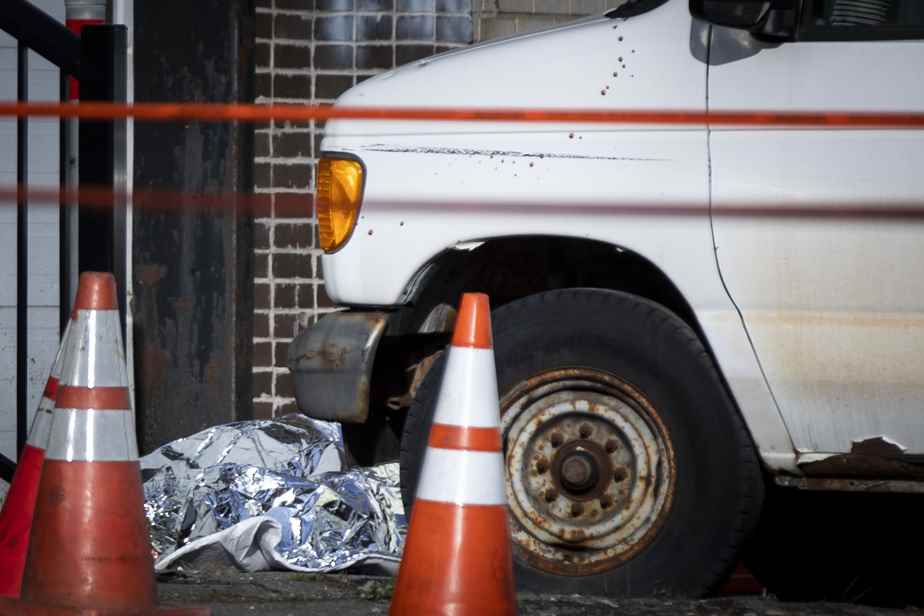More than a year ago, candidate Denis Coderre declared that Montreal needed 250 additional police officers. Since then, the debate in Montreal has revolved almost exclusively around the number of police officers we need, a dangerously reductive discourse that now risks being repeated throughout the Quebec election campaign.
Posted at 1:00 p.m.
This idea of recruiting 250 officers was a typical example of the Coderre approach: taking a complex issue (violence, in this case) and trying to reduce it to its simplest expression. And since 250 was the number of police officers requested by the Montreal Police Brotherhood, Coderre’s proposal also had the advantage of transforming his enemy during his tenure from 2013 to 2017 into an ally for his new campaign.
In the year that followed, Coderre’s former party, Ensemble Montreal, continued to propose the hiring of these 250 police officers as a magical solution to the problem of gun violence.
Projet Montréal, for its part, increased the budget of the Service de police de la Ville de Montréal (SPVM) by $45 million in 2022, a record increase that should enable the Service to recruit 122 new police officers.
The conflict between the two municipal parties over the number of police officers is now over. The Coalition avenir Québec, in campaign mode, announced on Saturday that it would work with the City of Montreal to hire 450 new police officers, thus pulling the rug out from under Ensemble Montreal and the CAQ’s major rival, Éric Duhaime. and his party, which had promised a few days earlier the hiring of 400 police officers in the metropolis.
No one has yet explained concretely how increasing the number of police officers would reduce armed violence. During the press conference last Saturday, Minister Geneviève Guilbault contented herself with saying that we wanted to restore Montrealers’ sense of security with an increased police presence. She avoided answering reporters’ questions about the concrete goals of the investments — reducing the number of guns or murders, for example.
The other is missing
In fact, an explanation would be difficult to offer. Currently, Montreal is the Canadian city with the highest rate of police officers per inhabitant, 33% above the average for large cities in the country. That number is expected to jump to 41% with Saturday’s announcement. If all these existing police resources have failed to prevent violent crime, it is because there is a lack other than police personnel. It is precisely this lack that should be at the heart of the debate.
Numerous studies have shown that to reduce violence, it is much more effective to invest in community interventions than in the police system.
This is not to say that we should ignore acts of violence when they occur, but rather that the bulk of the work can be done upstream and that it is much less costly, both financially and in terms of of human lives, to prevent rather than repress violence.
Investing in repression means giving more money to the police, the courts and the prison system – which leads mainly to the imprisonment of people who have not committed any acts of violence, but who seem likely to to commit. Afterwards, despite all the money spent, these people return to their communities in a more difficult situation than before, without any of the problems that led to the violence having been resolved.
Because the causes of violence are multiple and complex, we need a wide range of interventions. At the end of the day, it’s not only a question of how many non-police personnel are needed, but also where they will be assigned and what their mandate will be.
There are models of violence prevention, such as CURE Violence in the United States, which work very well and which could be adapted to the local context. These models have many components, the three most important being the provision of mental health support to victims of gun violence, summer employment programs for marginalized youth, and the deployment of street workers. trained to connect with marginalized and criminalized people and defuse conflict before violence erupts.
In Montreal, these programs do not exist or are hampered by a lack of funding (as is the case for street workers).
The recent forum on gun violence held in Montreal, although it had significant flaws, served to fuel the discussion on community responses to violence. This discussion must continue – with and especially without the presence of the SPVM. We must also allocate the necessary resources to implement the solutions advocated by the participants in these discussions.
It is around these questions, and not around the number of police officers, that the debate should revolve.

